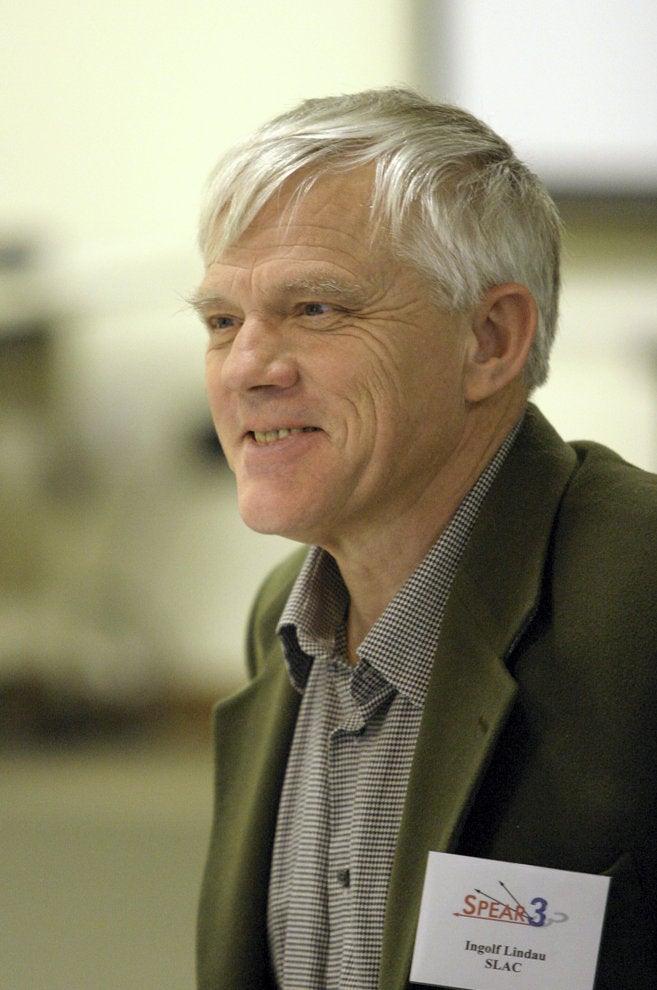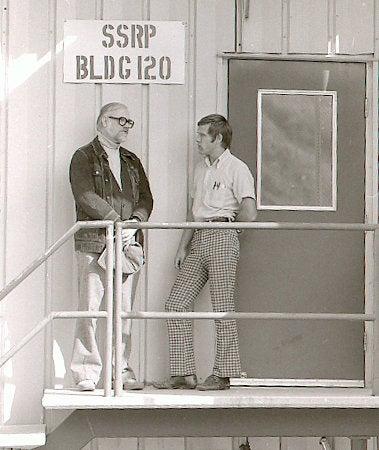Seminar Honors Ingolf Lindau
Ingolf Lindau, a professor emeritus of electrical engineering at Stanford and of photon science at SLAC, will be honored with a special seminar today highlighting his many contributions to X-ray science. The seminar is from 9 a.m. to 1 p.m. in the Building 48 Redwood rooms at SLAC. It is open to the public, and there is no charge to attend.
Ingolf Lindau, a professor emeritus of electrical engineering at Stanford and of photon science at SLAC, will be honored with a special seminar today highlighting his many contributions to X-ray science. The seminar is from 9 a.m. to 1 p.m. in the Building 48 Redwood rooms at SLAC. It is open to the public, and there is no charge to attend.
Speakers will address Lindau's pioneering work on what is now the Stanford Synchrotron Radiation Lightsource at SLAC, early days on the SSRL beamlines, current and future facilities and beamlines and the field of high-energy photoemission.
For more information please contact Laura Burns-Wood at (650) 926-2922 or lbw@slac.stanford.edu.
"Ingolf Lindau has played a pivotal role in the development of photon science at SLAC and beyond," said Piero Pianetta, acting director of SSRL. "He was a key player in the pilot project that helped to establish the Stanford Synchrotron Radiation Project, which is now SSRL. Together with Bill Spicer, he built a powerful and highly productive research program using photoelectron spectroscopy, especially in semiconductor surfaces and interfaces. This program, and its successors, has been a pillar of SSRL since then."
SLAC Professor Emeritus Herman Winick, who has worked with Lindau for 40 years in developing SSRP /SSRL, said, "His knowledge of the use of X-rays, across the entire spectrum from ultraviolet to hard X-rays, was essential to the planning for the first use of synchrotron radiation from SPEAR. SSRL would not be where it is today without Ingolf's passion for the science made possible by synchrotron radiation."
After pioneering photon science at SLAC, Lindau returned to his native Sweden to become director of MAX-lab, the Swedish national laboratory for nuclear physics and synchrotron radiation research, and to found the synchrotron radiation science department at Lund University, which is another center of excellence in photon science.
Lindau retired from MAX-Lab to come back to SLAC, where he played an active role in working with the Wallenberg Foundation to support SPPS, the Sub-Picosecond Pulse Source, on proof of concept-type experiments to help build the science case for the Linac Coherent Light Source.
Today, as a professor emeritus, he continues to serve the laboratory by chairing various committees and mentoring young people.
"As a senior leader of the field, his impact is felt worldwide as he serves on advisory committees for many photon science facilities in the international community," said Zhi-Xun Shen, advisor for science and technology at SLAC. "As a gentleman, Ingolf did all this with grace and with great admiration from his colleagues. The workshop is organized to celebrate his extraordinary scientific career and his contributions to SLAC's photon science."
Today's seminar is organized by SIMES, the Stanford Institute for Materials and Energy Science, a joint institute of SLAC and Stanford. It will feature talks by Pianetta; Shen; Charles Fadley of the University of California-Davis and Lawrence Berkeley National Laboratory; Lucio Braicovich of Politecnico di Milano; James Allen of the University of Michigan; and Zahid Hussain of Berkeley Lab.

